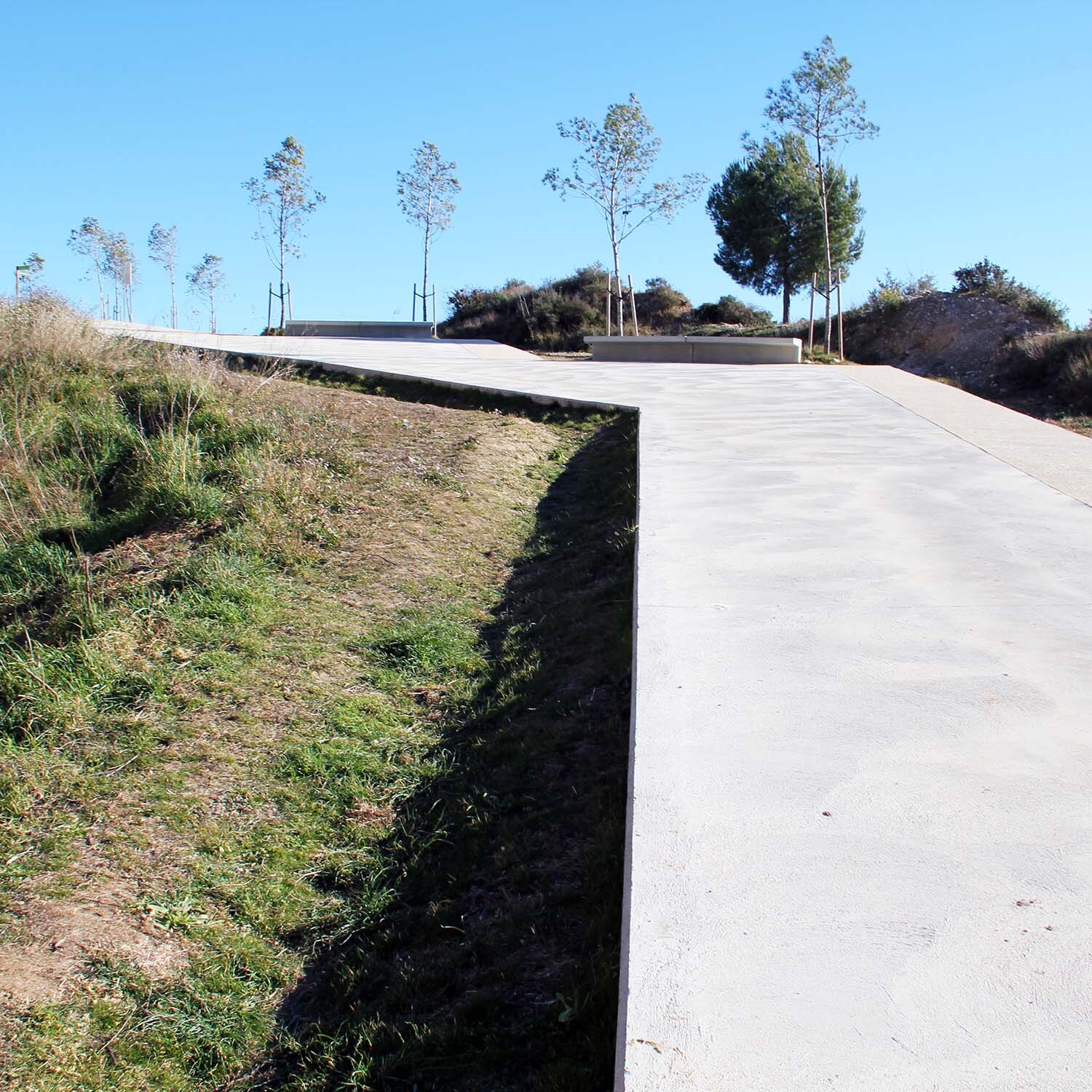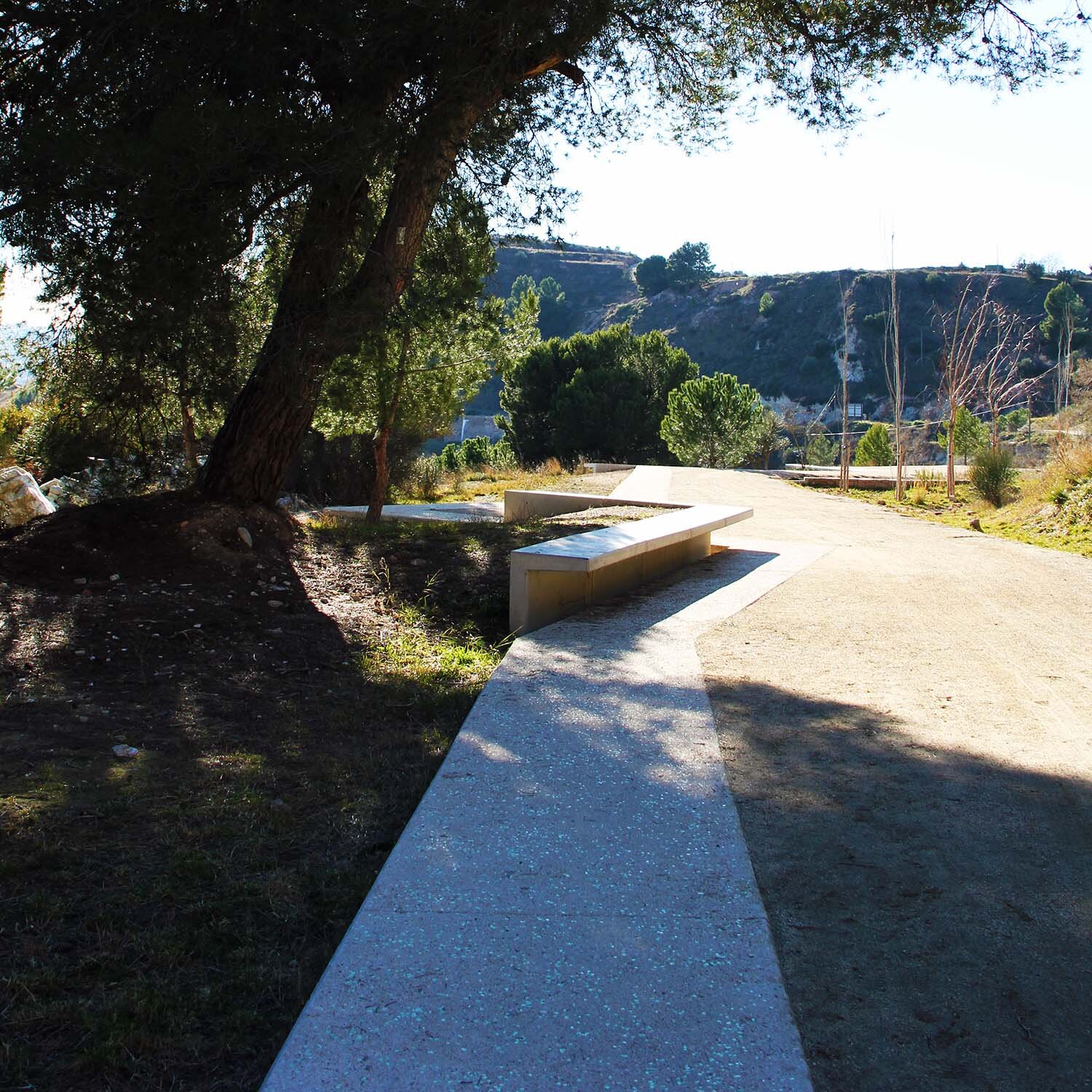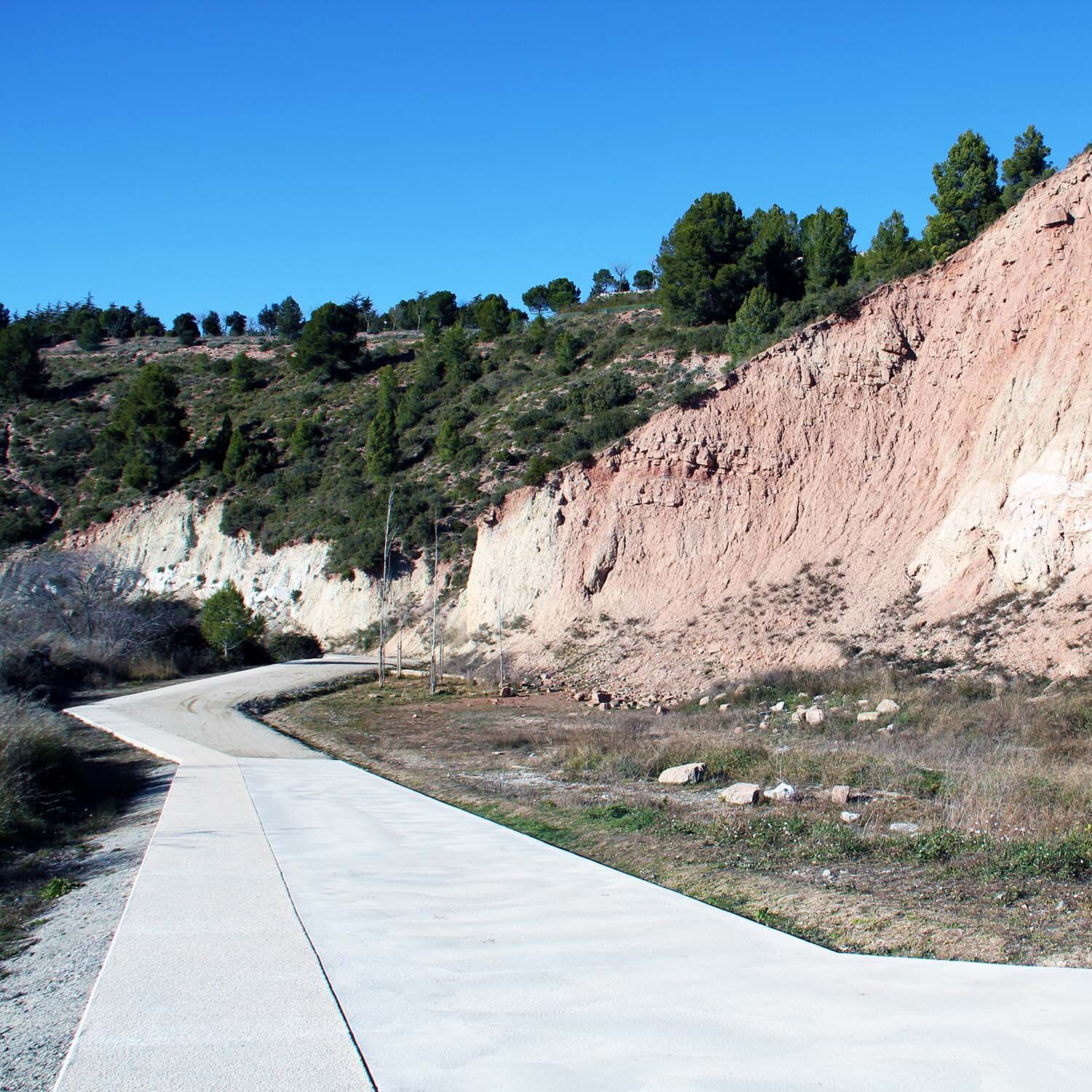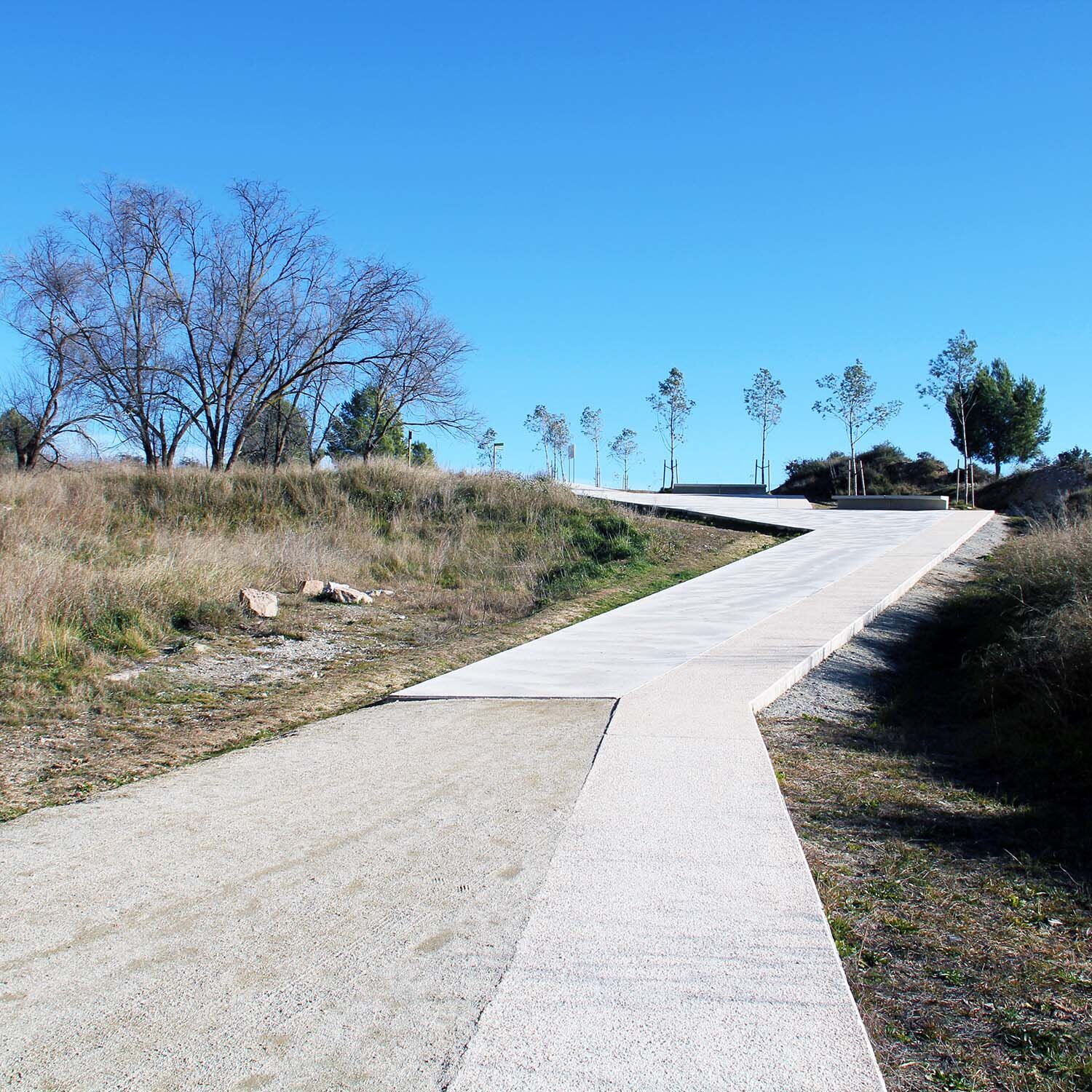Apr 01 2020, by Fleetwood Urban (Marketing)
CAMÍ DE LES GUIXERES - Gypsum Mines
Little more than an abandoned mining site since the 1970s, the ‘Camí de les Guixeres’ scenic path today sits high on the outskirts of Igualada, 65km west of Barcelona. Completed in 2018, it marks the first stage of the broader ‘Igualada Green Ring’ urban regeneration program. We recently caught up with the lead architect, Mario Súñer Díaz from Batlle i Roig in Barcelona, to discuss the globally-celebrated Access project.


“… a precise architectonic play with a restrained number of materials. A presence arises – a collision of space and time – and you experience a landscape at the same time very old and very new.”
Landezine International Landscape Awards Jury 2019
Project Background
Camí de les Guixeres is part of the Igualada Green Ring project commissioned by Igualada City Council. Driven by the twin objectives of connectivity and regeneration, the aim was to generate a series of fully contiguous pedestrian and cyclist routes that essentially form a ‘green belt’ around the entire perimeter of Igualada.
Having been neglected for more than four decades, the former gypsum mine site on Les Guixeres hill (literally, ‘The Plasterers hill’) was in a run-down condition when the project began. The unstable area was also susceptible to landslides due to the loss of natural vegetation and the absence of effective water runoff controls. From a design perspective, however, it was far from all bad news. The site’s elevated position provided the perfect natural viewing deck looking out across Igualada city and towards the rugged Montserrat mountain range.
Construction-wise, the completed walkway features three distinct sections:
1. Sandy path over the pre-existing mine track, connecting with the broader Green Ring
2. Linear lookout with concrete paving made with a luminescent aggregate that improves evening visibility by absorbing solar energy during the day
3. Dual-purpose ‘plant ditch’ to channel runoff water while also trapping rocks from minor landslips, which are then used to build additional retaining walls and benches on the site.
Awards
2018 World Architecture Festival (Landscape of the Year)
2019 Iconic Award Winner (Open Space Planning)
2019 Landezine International Landscape Awards (Public Projects)


Mario, thank you so much for your time. Where did the original design inspiration come from for Camí de les Guixeres?
Rather than an inspiration, the project is the result of a very sensitive reading of the values of the site. We believe every place, even if it is in a clear state of degradation, has latent potential. As landscape architects our gaze must be trained to see what a place can offer, regardless of its current situation. In the case of the former gypsum mines, everything beautiful that people can appreciate now, was already there previously – the visuals, the resting corners, the olive trees, the almond trees, the shade of the pines and even the water that we retain. The concrete strip that zigzags through the landscape helps to underline these existing qualities, highlighting their values and unifying the elements.
What was the most challenging part of delivering the project?
The project was born and built during the (Spanish economic) crisis, so we had a very small budget available. The original brief was simply to deliver a new path on Les Guixeres hill to ensure the continuity of the Igualada Green Ring. But with the knowledge we acquired about the site and its values, we felt compelled to take the whole former gypsum mines as our scope of work. We did not want to merely design a simple path, oblivious to the wider potential we observed at the site. Our desire was to recover the entire area, historically abandoned, and integrate it into the green and social infrastructure of Igualada city. That was the most complex part of the project – how to match the desire of a global intervention with the minimum budget of a partial proposal? We had to analyse many different possibilities and scenarios to distil the original idea into a minimal expression that, whilst it sits largely within the confines of the original path, still manages to transform the entire area.
What was the most innovative part of the project?
The technical configuration of the path itself, where each of the elements solves different functions while also adding to the project’s overall character and form. For instance, the drainage is more than just a ‘green ditch’; it is a carefully-configured system with a succession of retention areas that treats rainwater as a resource to enhance the regeneration of the wider site. Another example is the materiality of the path that combines various materials – half with natural-looking fine gravels, complemented by a concrete strip that creates its geometric character and also improves access and inclusivity. Recycling was another important innovation, both due to its environmental aspect but also the reduction in costs it provided. This included the use of smashed asphalt as the base of the pavements and the collection of existing stones for the construction of retaining walls. Finally, we proposed an innovative solution to meet Igualada City Council’s desire to light the new path. We could not afford a conventional lighting installation, so we instead applied a special type of gravel with luminescent properties in the composition of the concrete so it shines in the early hours of the night and thus lengthens the hours of use.
Looking at the results, what are you proudest of?
I will say a couple of aspects: On the one hand, we are very satisfied with the project because it has had an exceptional reception from the local citizens. They flock to stroll and practice sports along the path in their leisure time. This has motivated the municipality to proceed with additional segments of the track to continue extending this Green Path around the city. On the other hand, we are also very satisfied that despite working with geometries and materials that were perhaps not obvious or natural to the area, we have been able to achieve a perfect integration into the local environment. We were also able to do it very quickly.
What lessons can landscape architects all over the world learn from the success of this unique project?
That you don’t have to touch everything to achieve a big change. It is not necessary to transform every single square metre of a site to achieve a major transformation.



